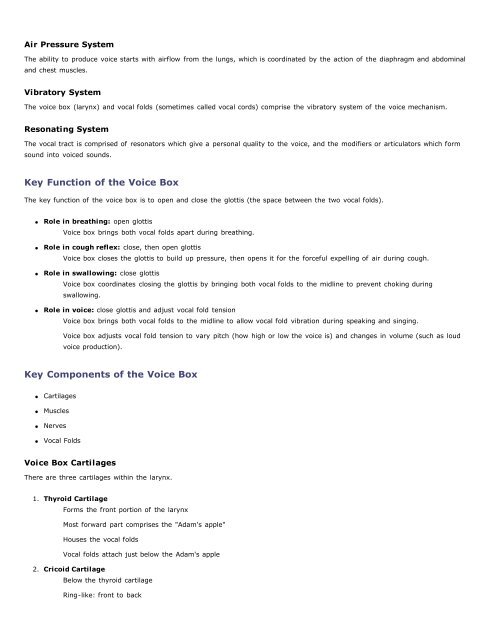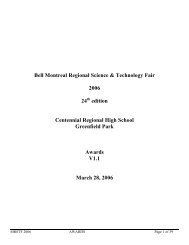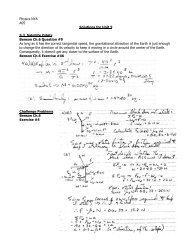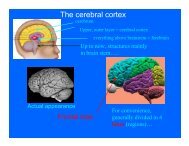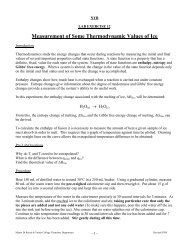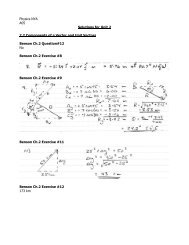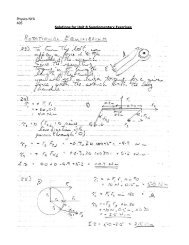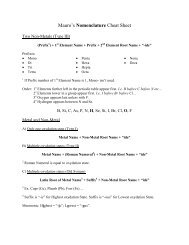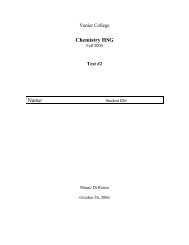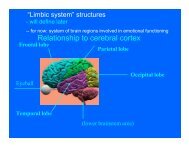anatomy & physiology of voice production
anatomy & physiology of voice production
anatomy & physiology of voice production
You also want an ePaper? Increase the reach of your titles
YUMPU automatically turns print PDFs into web optimized ePapers that Google loves.
Air Pressure System<br />
The ability to produce <strong>voice</strong> starts with airflow from the lungs, which is coordinated by the action <strong>of</strong> the diaphragm and abdominal<br />
and chest muscles.<br />
Vibratory System<br />
The <strong>voice</strong> box (larynx) and vocal folds (sometimes called vocal cords) comprise the vibratory system <strong>of</strong> the <strong>voice</strong> mechanism.<br />
Resonating System<br />
The vocal tract is comprised <strong>of</strong> resonators which give a personal quality to the <strong>voice</strong>, and the modifiers or articulators which form<br />
sound into <strong>voice</strong>d sounds.<br />
Key Function <strong>of</strong> the Voice Box<br />
The key function <strong>of</strong> the <strong>voice</strong> box is to open and close the glottis (the space between the two vocal folds).<br />
Role in breathing: open glottis<br />
Voice box brings both vocal folds apart during breathing.<br />
Role in cough reflex: close, then open glottis<br />
Voice box closes the glottis to build up pressure, then opens it for the forceful expelling <strong>of</strong> air during cough.<br />
Role in swallowing: close glottis<br />
Voice box coordinates closing the glottis by bringing both vocal folds to the midline to prevent choking during<br />
swallowing.<br />
Role in <strong>voice</strong>: close glottis and adjust vocal fold tension<br />
Voice box brings both vocal folds to the midline to allow vocal fold vibration during speaking and singing.<br />
Voice box adjusts vocal fold tension to vary pitch (how high or low the <strong>voice</strong> is) and changes in volume (such as loud<br />
<strong>voice</strong> <strong>production</strong>).<br />
Key Components <strong>of</strong> the Voice Box<br />
Cartilages<br />
Muscles<br />
Nerves<br />
Vocal Folds<br />
Voice Box Cartilages<br />
There are three cartilages within the larynx.<br />
1. Thyroid Cartilage<br />
Forms the front portion <strong>of</strong> the larynx<br />
Most forward part comprises the "Adam's apple"<br />
Houses the vocal folds<br />
Vocal folds attach just below the Adam's apple<br />
2. Cricoid Cartilage<br />
Below the thyroid cartilage<br />
Ring-like: front to back


